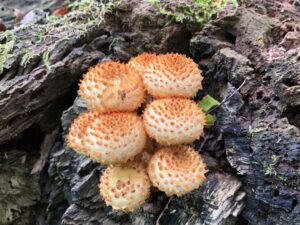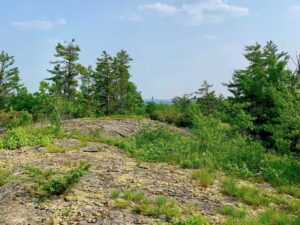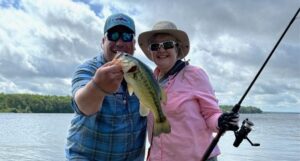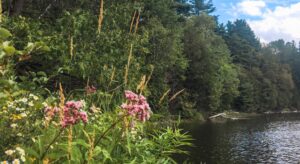Written by Ciara Dunne, Ecosystem Management Technology, Fleming College, Placement Student
Kawartha Land Trust hosts several events annually that help teach the public about the natural environment and the wildlife that inhabit these natural spaces.
Without the generous support of our donors of land, money & time – the conservation of the beautiful natural areas that KLT protects would not be possible. Without our donors, opportunities for people to get the chance to get outside and appreciate unique natural spaces and learn interesting things about their inhabitants would not be possible.
Before you head out, here is some background on salamanders, as well as cool facts about a few species of salamanders that you might find on the property.
Salamanders are some of the more elusive of the amphibians because they’re hardly seen after they finish breeding in the spring. They frequent in stream and forest ecosystems and greatly out number all other invertebrates that live in the same ecosystems. A majority of Ontario’s habitats are primarily forest, which resulted in Ontario having the largest population of salamanders than any other province in Canada. Three kinds that you can find in the Kawartha Region are the Spotted Salamander, Blue-spotted Salamander, and the Eastern Red-backed Salamander.
Spotted Salamander
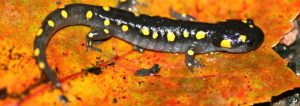
Spotted salamander resting on a leaf, the bright yellow spots serves as a defining characteristic!
The spotted salamander can be identified by its robust black and grey body with yellow spots. This species of salamander is carnivorous from birth as it eats aquatic insects from its larval stage, and then eats insects and other invertebrates when they reach maturity.
Blue-spotted Salamander
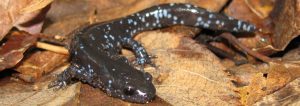
The Blue-spotted salamander can sometimes be hard to identify because it breeds with other species of salamander like the Jefferson’s Salamander; therefore, creating many different types of hybrids.
The blue-spotted salamander can be identified by its robust body and small, blue spots scattered all over its body (as the name states), and their body colour ranges from black to blueish-black. When they reach maturity, blue-spotted salamanders like to eat invertebrates like crickets, snails and slugs. These little guys are also nocturnal, and are active during warm and rainy nights.
Eastern Red-backed Salamander
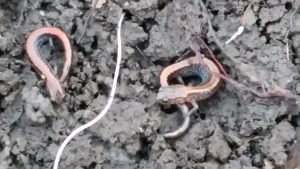
Two Eastern Red-backed Salamanders found on a past KLT “Date Night with Salamanders” event.
The red-backed salamander can be identified by the thick, red stripe that goes from the tip of its nose to the tip of its tail. This type of salamander is very territorial and hardly ventures very far from its home; you can usually find them under logs. Something special about the red-backed salamander is that it doesn’t have lungs; instead, it breathes through its skin by absorbing oxygen from the water. Unlike most salamanders, females usually only lay up to 10 eggs and tend to stay with their eggs until they hatch. Red-backed salamanders are polymorphic, giving them two color variations. Their second color variation, known as the lead-back phase, is where the salamander does not have the red-back but instead a solid black or dark grey body.
One thing that all three salamanders have in common is that they greatly depend on having their skin moist to maintain hydrated. Since their skin is very porous they can be easily affected by changes in their environment, and therefore, are very important in detecting the health of ecosystems. Run-off from road salts, pesticides, and other chemicals can cause great harm to salamanders’ health. Other factors such as logging, reduction of canopy cover, and urban development can cause their habitats to lose moisture, as well as their homes. In the spring, traffic has been a problem for salamanders that are crossing roads to get to their breeding ponds.
By protecting more land we’ll be helping to ensure a safe place to live for the salamanders. Reporting road killed salamanders to the Ontario Reptile and Amphibian Atlas is a good way to let researchers get a better picture of salamander migration routes so that they can help our slimy salamander friends reach their breeding ponds safely.
While you’re hiking, the best thing you can do to mitigate harm stay on the trails, admire them on the ground rather than picking them up. If you do pick them up, make sure that you aren’t wearing any lotion or bug spray on your hands because the chemicals could seep into the salamander’s skin.
Happy observing!
Posted April 23, 2019



